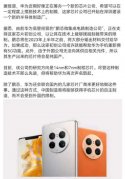You are using an out of date browser. It may not display this or other websites correctly.
You should upgrade or use an alternative browser.
You should upgrade or use an alternative browser.
Chinese semiconductor industry
- Thread starter Hendrik_2000
- Start date
- Status
- Not open for further replies.
I'm not sure the I agree with that.
Their next chip should not take 3 more years. I think 1 year (2 year max) would be the time they need to develop a second generation chip using SMIC process.
Then we agree!
Let's hope they learnt their lesson from the recent news that working with TSMC for future chips is a bad idea
I'm afraid they don't need to learn, they will be served this ban treatment within this week. It would make really no sense, even for "frantically paranoid"
page 562 of this threadThat would be great, do you have any links to this? I'd be curious to read. I think Huahong will start 14nm production soon. If ICRD can start 14nm also, then SMIC can move off 14nm and just concentrate on more advanced nodes in their SN1 plant.
14nm process for smartphone CPU? That won't be very competitive. The best Huawei can do in the immediate is chips using SMIC's N+2 process. That should start soon.
I'm not sure the I agree with that. I'm sure SMIC has their own packaging technology. More importantly, BR100 is using a 7nm process here to get the same performance for AI computation as H100 got with 4nm TSMC process. The transistor density for BR100 is 71 million per mm^2. That's not very dense. Biren working with SMIC's N+2 process or N+2 improved process will be able to pack transistors a lot more tightly into the die.
The other thing is that Biren has been very fast in developing this first chip. It took them 3 years to push a product out to the market that is industry leading. Having recently invested in a promising startup, I can assure you that a good chunk of the first year of a tech startup is just spent getting funding, building relationships and hiring people. So in 3 years, they've managed to get all the necessary funding, attacking partnerships with the biggest players in China, hired up an entire team, developed all their own language (SUPA) for chips, the software support packages for it and developed an industry leading chip design and tested it out. Their next chip should not take 3 more years. I think 1 year (2 year max) would be the time they need to develop a second generation chip using SMIC process. After all, even Phytium was able to design a new server CPU will SMIC N+1 process in a year.
Let's hope they learnt their lesson from the recent news that working with TSMC for future chips is a bad idea and that they need to work with SMIC asap. Until then, they need to stock up as many BR100/104 as possible to not suffer from future sanctions.
All in one store for SiC fabrication needs
(Foshan) Semiconductor Technology Co., Ltd. (Jihuahengyi for short) is a scientific and technological achievement industrialization company of Jihua Laboratory (Key Laboratory of Advanced Manufacturing Science and Technology Guangdong Province). The company was established on June 22, 2021 with a registered capital of 10 million yuan. It is a high-tech semiconductor equipment enterprise integrating R&D, production, sales and service.
中国科学院上海光学精密机械研究所2021年7至12月政府采购意向-LPP光刻光源收集镜多层膜沉积平台建设与关键技术研究-超高真空EUV薄膜沉积装置,1台套,用于高性能EUV薄膜的研
I was thinking that any company or spin off from CAS that develop an EUV machine will be at a better completive advantage against ASML than SMEE because ASML can't sell EUV in China. Even a machine that can only do 60 WPH is better than one that is not existent.
Last edited:
Could you translate it?中国科学院上海光学精密机械研究所2021年7至12月政府采购意向-LPP光刻光源收集镜多层膜沉积平台建设与关键技术研究-超高真空EUV薄膜沉积装置,1台套,用于高性能EUV薄膜的研
I'm confuse by all the hyphens in the Google translated version: "Shanghai Institute of Optical Precision Machinery, Chinese Academy of Sciences July-December 2021 Government Procurement Intent - LPP Photolithography Source Collection Mirror Multilayer Membrane Deposition Platform Construction and Key Technology Research - Ultra-high Vacuum EUV Film Deposition Device, 1 Set for the Research of High-Performance EUV Film"
Change membrane with film. Is a chamber to built EUV collector mirrors, the giant multilayer mirrors in the back of the droplet generator that catch the EUV light generated when the high power laser hit the molten tin droplet.Could you translate it?
I'm confuse by all the hyphens in the Google translated version: "Shanghai Institute of Optical Precision Machinery, Chinese Academy of Sciences July-December 2021 Government Procurement Intent - LPP Photolithography Source Collection Mirror Multilayer Membrane Deposition Platform Construction and Key Technology Research - Ultra-high Vacuum EUV Film Deposition Device, 1 Set for the Research of High-Performance EUV Film"
Well, we still need to see what the ban looks like exactly. SMIC should have enough of the latest ASML scanners to produce all the HPC and AI chips that China needs.Then we agree!I also think about 1/2 years slow down....it also depends on SMIC to get the needed capacity (also SMIC is going to get a cold shower this week).
I'm afraid they don't need to learn, they will be served this ban treatment within this week. It would make really no sense, even for "frantically paranoid"people, to block NVIDIA to sell AI chips in China and don't ban at the same time TSMC for Chinese AI firms. I really don't expect that, otherwise it's a joke.
Thanks. It would be good to see them able to establish a fully domestic 14 nm line this year. I find It hard to believe SMEE's Arfi scanners will already be accurate enough that they can do 7nm node with adequate yield by next year.page 562 of this thread
- Status
- Not open for further replies.


